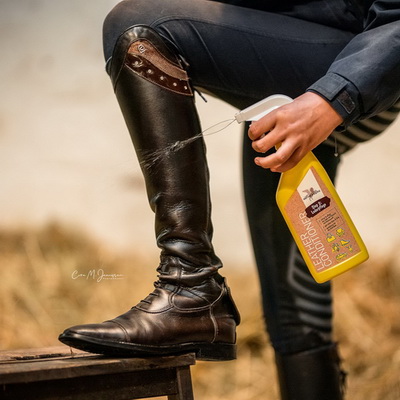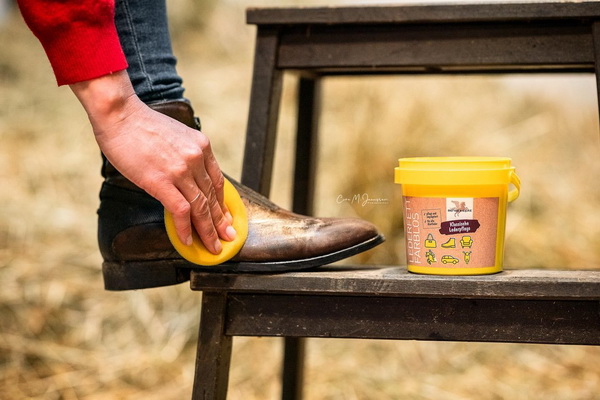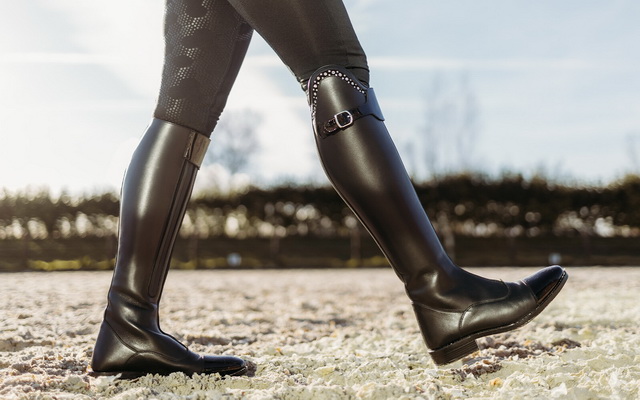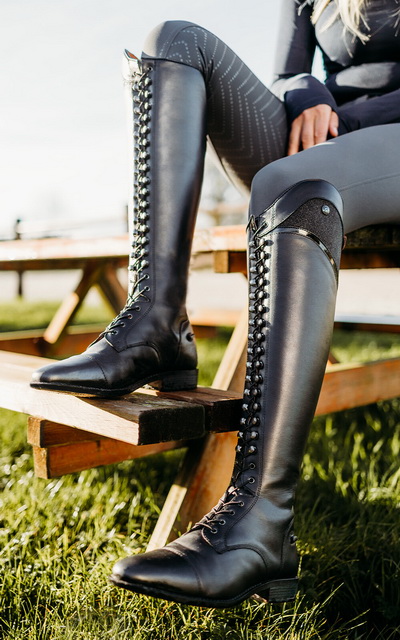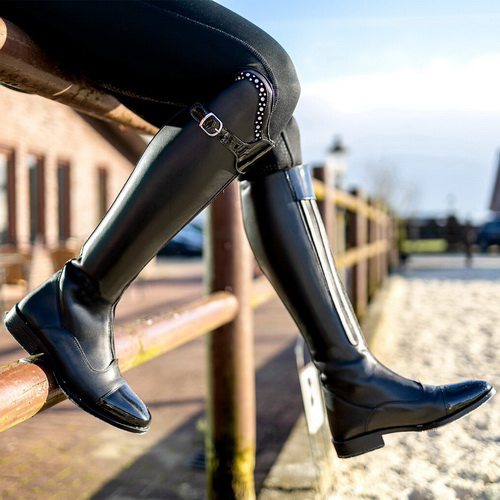
How to maintain your riding boots?
Would you like to use your favourite riding boot for a long time?
Besides the intensity of use, the way you maintain your footwear is very important for the lifespan of your new item.
So it's time to make a list of the best ways to take care of your footwear.
Daily maintenance
Whatever material you have chosen, for daily maintenance it is best to wipe your riding boots or jodhpurs each time after use with a damp, clean cloth to remove mud and other dirt. Is your footwear very dirty? Use a soft brush to remove stubborn dirt. Pay extra attention to the edge of the sole. In this area, dirt can quickly penetrate and damage the leather and stitching.
Also make sure your footwear doesn't get too wet (unless they are made of rubber, then it won't hurt). So don't rinse them under the tap. Are your shoes or boots unexpectedly very wet? Let them dry at room temperature, possibly with paper in them to absorb the moisture. Make sure you don't put them next to a stove or heater, this will dry out the material.
In addition to this daily maintenance, it is good to take care of your footwear regularly. Make sure your boots or shoes are clean and dry before you start treating them. How often you can best maintain your footwear can vary from once a week to once a month. It depends on different circumstances such as: the weather, the intensity of use, the discipline you ride, the environment in which you train your horse or pony and of course the material you've chosen. Each material is treated in a different way. So when you buy your shoes or riding boots, take a good look at what materials they are made of. Often combinations of different materials are used, for example a leather foot and an imitation leather shaft.
Leather
Most footwear is made of (bovine) leather. The nice thing about this is that it is breathable and the shoe often has a good footbed. This increases the wearing comfort, which is of course very nice if you spend a lot of time on your shoes or boots every day.
Leather shoes or boots are best taken care of by first removing any stubborn stains with a damp cloth. The sweat of your horse dries out leather so it is very important to remove this regularly. When cleaning leather, a cleaner can sometimes be a solution, for example with processed leather. This is often sold as a set with a matching cream. Use the cleaner in moderation, as it can dry out the leather a little when used excessively.
Is your footwear clean? Then rub it with a sponge or a soft cloth with conditioner or shoe cream. Then let it soak in well, preferably for at least a day. Any excess leather cream can be rubbed away before use. Do you have coloured footwear and do you want to keep the colour of the leather as good as possible? Then use a colour-based cream. Do you often train in wet conditions? Then you can best protect the leather by treating your shoes or boots with a water repellent spray afterwards. The lifespan of the leather can be extended considerably by the water-repellent components in the spray. When choosing a water-repellent spray, pay close attention to the composition. Silicone based sprays limit the breathability of the leather.
Imitation leather
Because imitation leather is often made of synthetic material and does not have the same properties as real leather, maintenance is a lot easier. Cleaning with a damp cloth is often sufficient. In case of very stubborn dirt you can also use a cleaner. For imitation leather there are special sprays that you can use to maintain your footwear and protect it against moisture and dirt. However, do not do this too often, this can give the boot or jodhpur a dull look. Only when you train in humid conditions it is desirable to repeat this several times a year. Make sure your shoes or boots are clean before spraying them. Do not treat imitation leather with a conditioner or cream next to the protective spray. This makes little sense because imitation leather does not absorb these care products.
Patent leather
The same maintenance rules apply to patent leather as to imitation leather. However, it is desirable to treat the patent leather more often with a spray specially made for this purpose. This spray protects the leather against moisture and dirt and makes the lacquer shine extra.
Suede (Imitation)
Have you chosen chaps made of (imitation) suede? Then it is especially important that you spray them with a water and dirt repellent spray before use to protect the material. In addition, it is good to keep repeating this regularly. This keeps the material of high quality, so you will enjoy it longer. Make sure that any stains are removed before spraying. The sooner you treat the stain, the better you can still remove it. Dry dirt can be removed with a soft brush. Always brush in the same direction so that the bristles are not damaged. If you suffer from water stains, let your chaps dry at room temperature. Make sure there is no heating or other source of heat nearby.
Rubber
Rubber jodhpurs or boots are easy to maintain. Just rinse them, possibly with soap and a sponge, and they look like new again. They are ideal for use in mud or during mucking out.
Extra tips to enjoy your riding boots and jodhpurs even longer:
- Use boot shapers to keep the shape of your boot as optimal as possible. Using a boot shaper will also increase the life span of the zipper.
- The combination of moisture and bacteria accelerate the wear process. Therefore change your shoes if possible. This allows the leather to relax and wear less quickly.
- After taking care of your shoes or boots, use a nylon pantyhose or shine sponge to give your shoes or boots extra shine.
- Store your boots in a boot bag and preferably put them down, so the boots won't collapse as quickly. Make sure you let the boots dry and breathe well before storing them in the bag.
- Do you have zippers in your boots or shoes? Then use a so called zipp-spray. This ensures that the zipper remains supple and clean. (Or choose for a home, garden and kitchen solution: (candle) wax or Vaseline).
- Are your boots equipped with rhinestones? Then treat this part only with a damp cloth.
- Use your leather riding boots or shoes as much as possible just for riding. Mud and manure will quickly damage the leather.
- Do not use saddle soap or oil on your shoes or boots. This may cause the leather to discolour, get dull spots and loose stitching.
Many thanks to QHP for the content!
https://www.qhp.nl/blog/how-to-maintain-your-riding-boots-and-jodhpurs/

